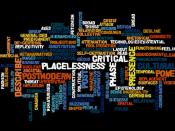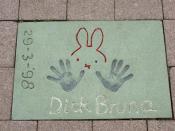Postmodernism, also known as Pomo1, Po-Mo2, or PoMo3, is a difficult word to define because it appears in a wide variety of areas of study. These include art, architecture, music film, literature, sociology, communications and many more. It is also difficult to determine exactly when postmodernism came about but it would be safe to say it came around the same time as the First World War.
Possibly the easiest way to start to define postmodernism is to look at modernism, the movement that postmodernism seems to have grown out of. Modernism is a movement that occurred in visual arts, music, literature and drama. It rejected the old Victorian standards of how art should be made and what it should mean. During ÃÂhigh modernism,ÃÂ which occurred from 1910 to 19304, major figures in literature like Woolf, Joyce, Eliot and Stevens drastically redefined what poetry and fiction could be and do.
The main characteristics of modernism51.
Placing an emphasis and subjectivity in visual arts and in writing. An emphasis was also placed on how seeing takes place rather than what is perceived.
2. A blurring of distinctions between topics.
3. An emphasis on fragmented forms and seemingly random collages of different materials4. A trend towards the self consciousness about the production of the work of art. In this way, each piece demands attention to itself as a production, as something made and consumed in a particular way.
5. A rejection of complicated formal aesthetics for minimalist designs, as well as the rejection of formal aesthetic theories in favor for spontaneous creations6. The distinction between ÃÂhighÃÂ and ÃÂlowÃÂ art forms was also rejected, both in choice of materials used to produce art and in the ways of displaying, distributing and the consuming of art.
Similar to modernism, postmodernism follows many of these ideas...


